Life for the kelp that Seagrove grows begins not far from the farm in Doyle Bay, Alaska. Kelp, a brown seaweed that grows along rocky saltwater coastlines, grows plentiful in the cool, nutrient-rich waters of Southeast Alaska. Seagrove Kelp begins in the wild, where our experts dive for and harvest adult kelp blades showing signs that they are ready to reproduce.
This “sign” comes in the form of sorus tissue, as seen below. The sorus houses the spores used for kelp reproduction.
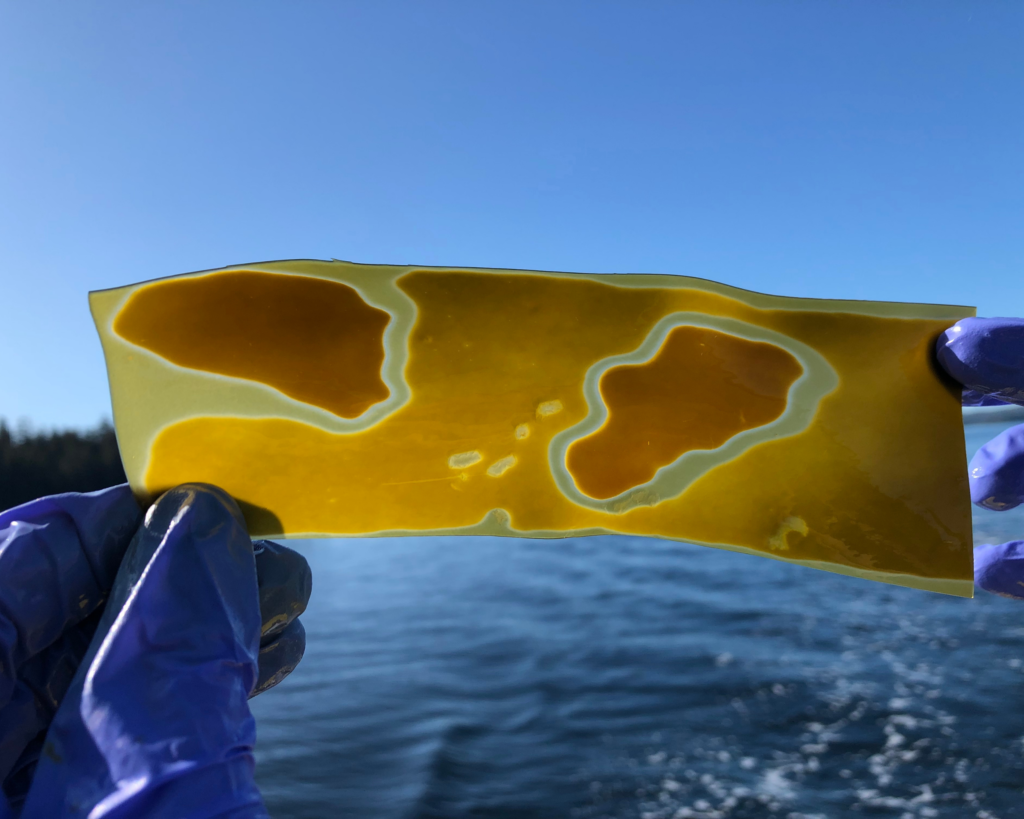
Once the tissue has been harvested from the wild kelp it is carefully transported back to the Seagrove lab and nursery in Ketchikan, Alaska. We are sure to collect tissues from multiple sites and harvested biomass only fills about eight, 5-gallon buckets, which are used to populate the entire kelp farm and produce tens of thousands of pounds of new biomass. Here, under the careful eye of our Research Director, Dr. Tiffany Stephens, PhD., the kelp is stressed to encourage them to release spores directly from sorus tissue (plural = sori). This is accomplished by allowing the sori to gently dry-out between paper towels while leaving in a cool, dark environment overnight. We know that the tissue is ready to release its spores when a spore print is visible on the on the paper towels, as seen below.
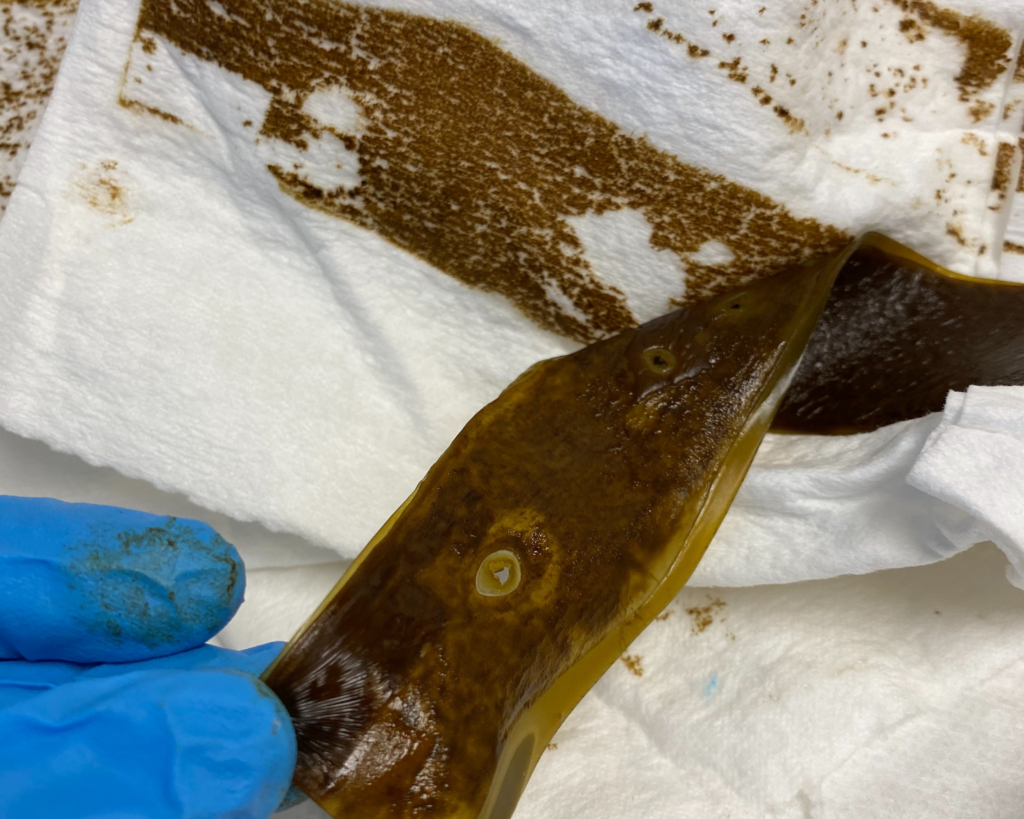
After being gently stressed, the tissue is ready to be added to clean containers with filtered seawater so that the spores can be released to create an inoculation solution. The water will turn a little murky, which is a sign that the spores are releasing correctly!
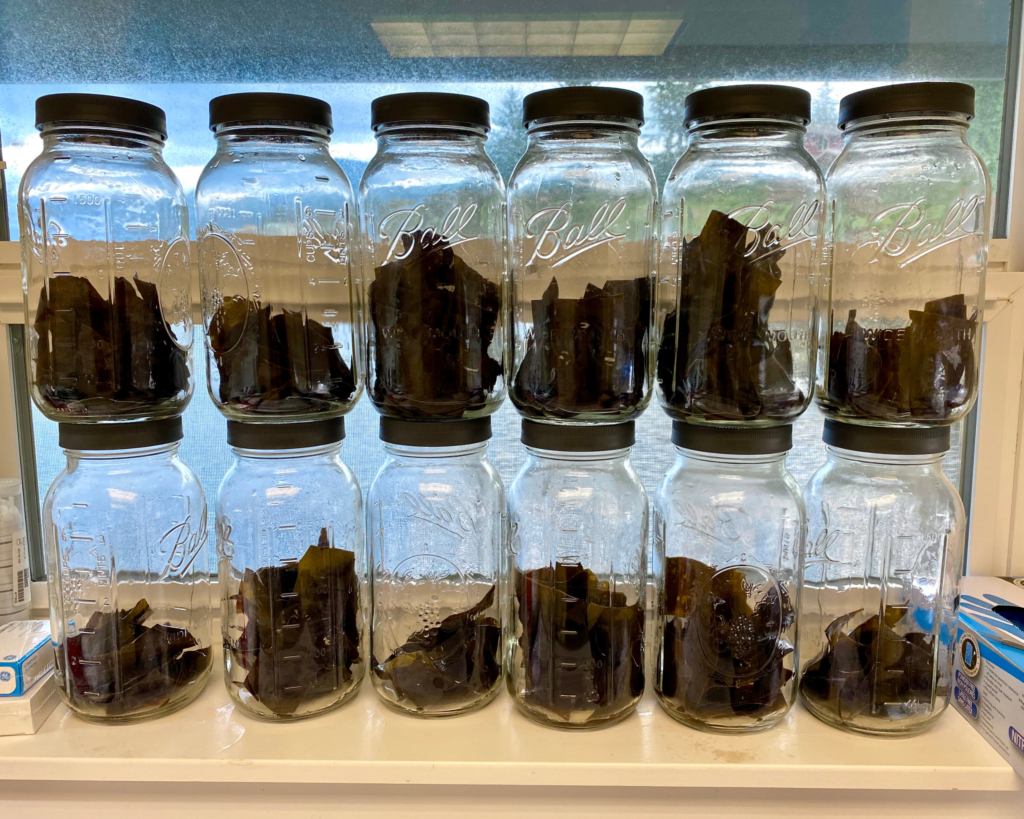
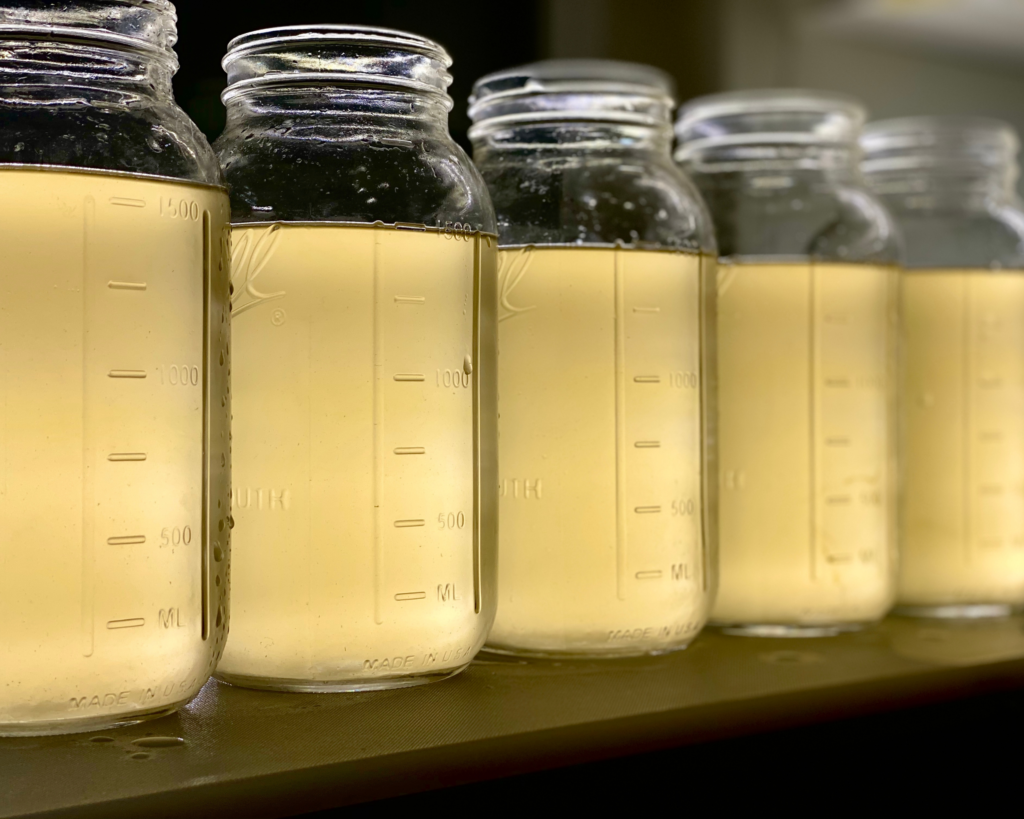
After the spores are released the mixture is filtered to remove any debris and the spores are counted using a microscope and a haemocytometer (fancy glass slide with a grid for counting cells) to calculate the total spores available for inoculation.
The count has to be exact so that the correct number of spores are introduced to the spools used as substrate for spore attachment. Seagrove aims to inoculate their spools using an inoculation solution that has 5,000-7,500 spores per milliliter of seawater (depending on the kelp species!). When the count is complete the spore mixture is added to the spool inoculation tanks and left to incubate in the dark, overnight, as seen below.
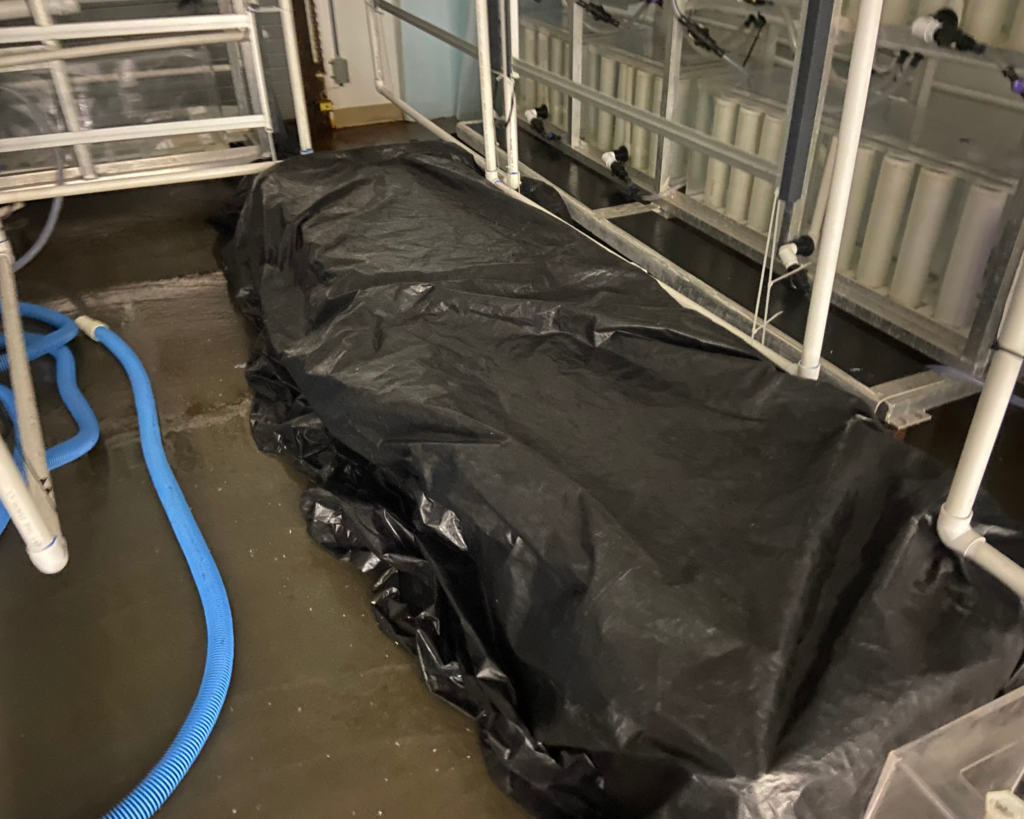
The final step in this process is to relocate the spools to aquaria that are fitted with adequate temperature, light, and nutrients — essentially small aquatic greenhouses! Here they will grow into the baby kelp that will be seeded out at the farm in just a few short months!
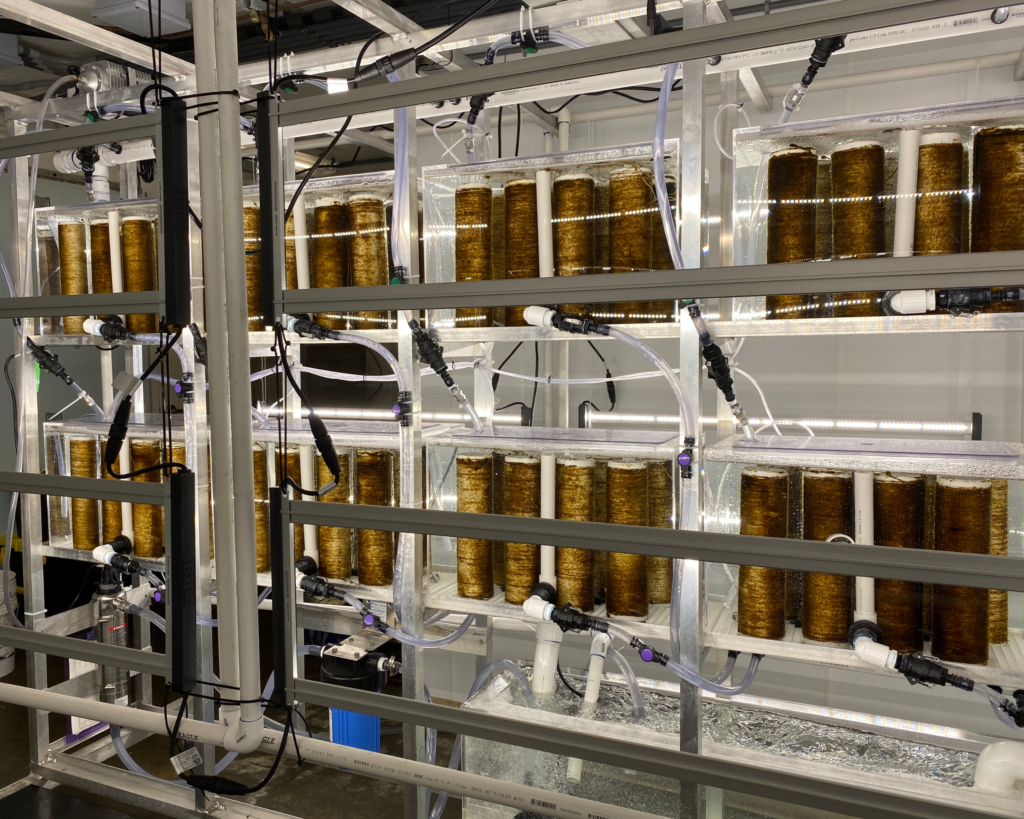
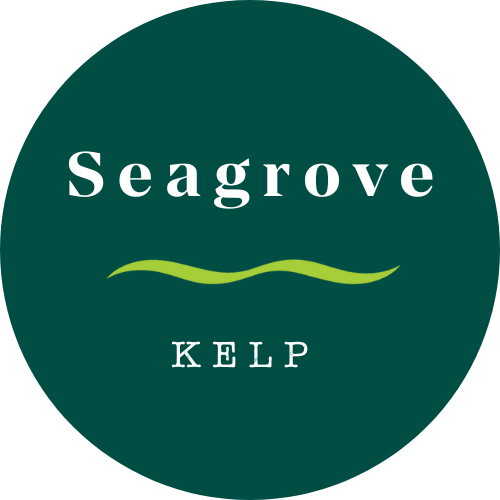
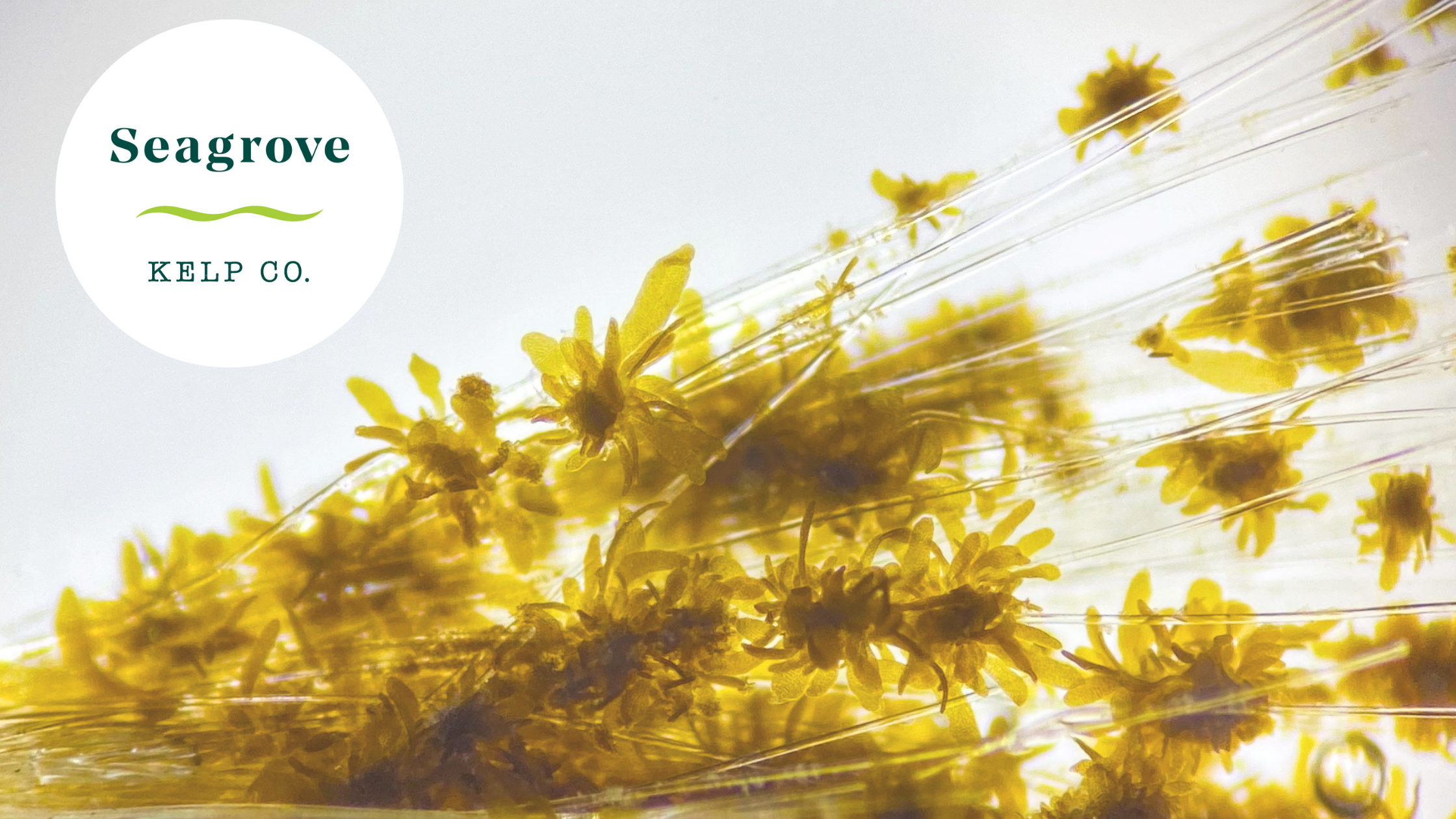
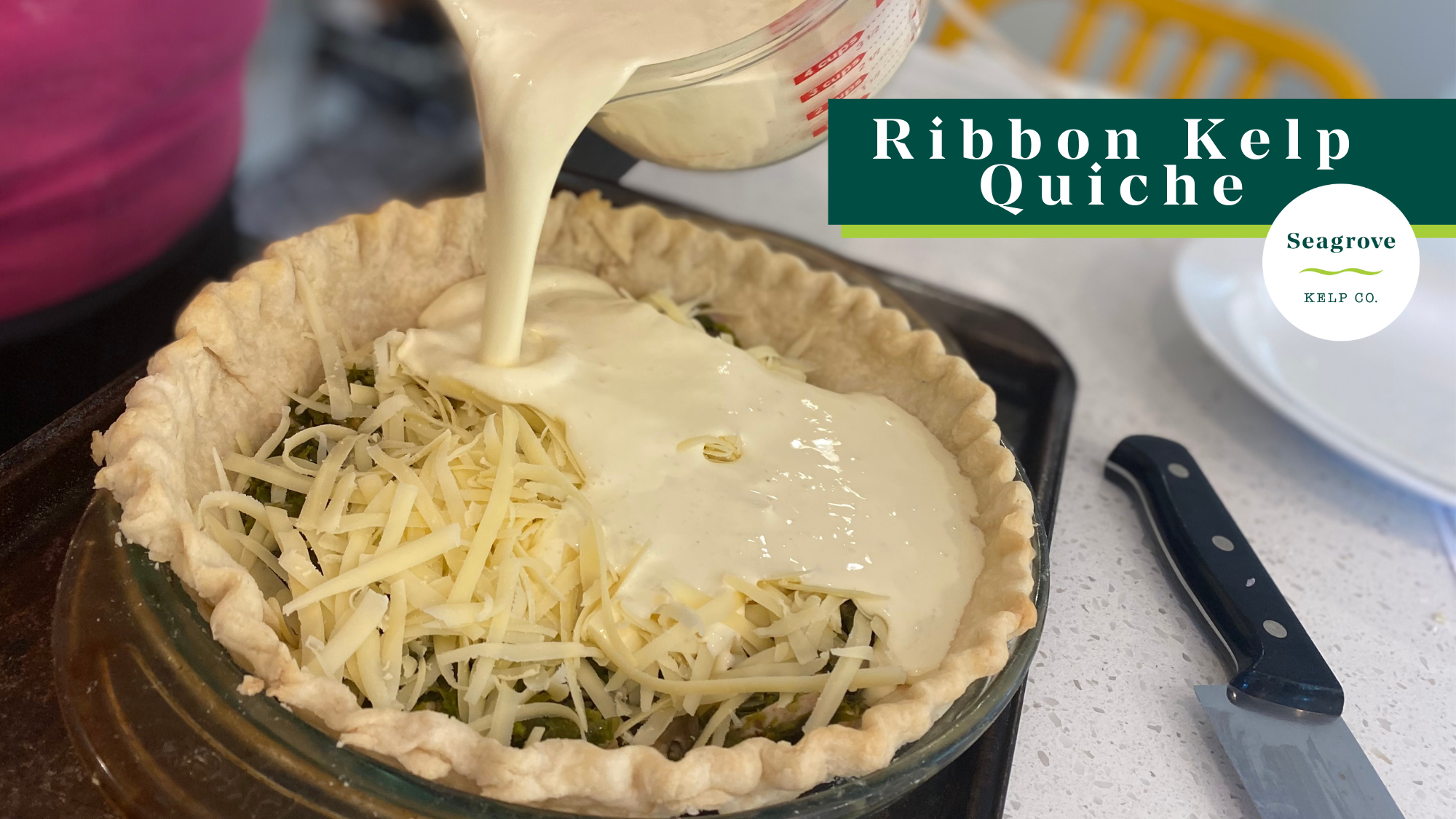

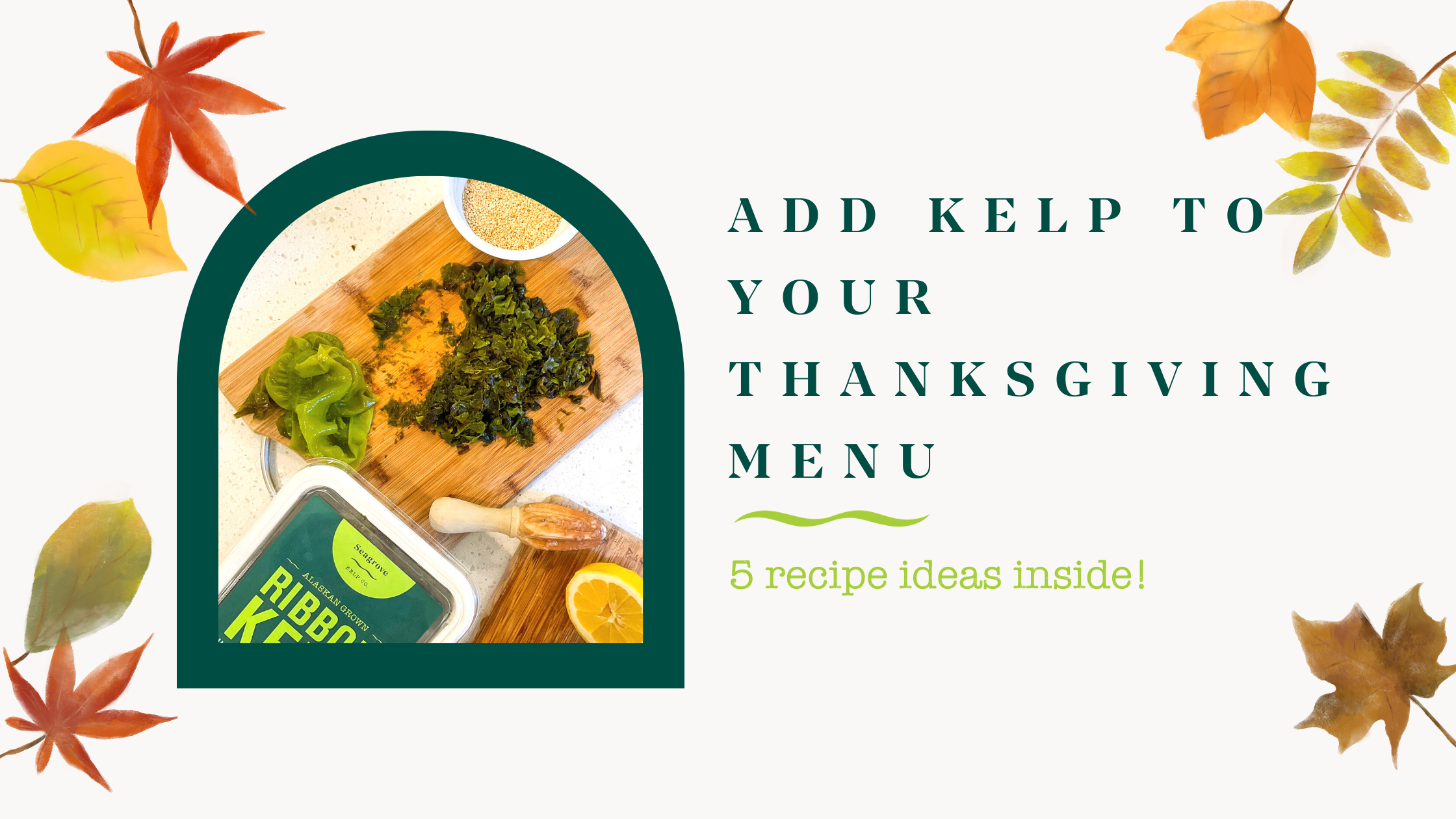
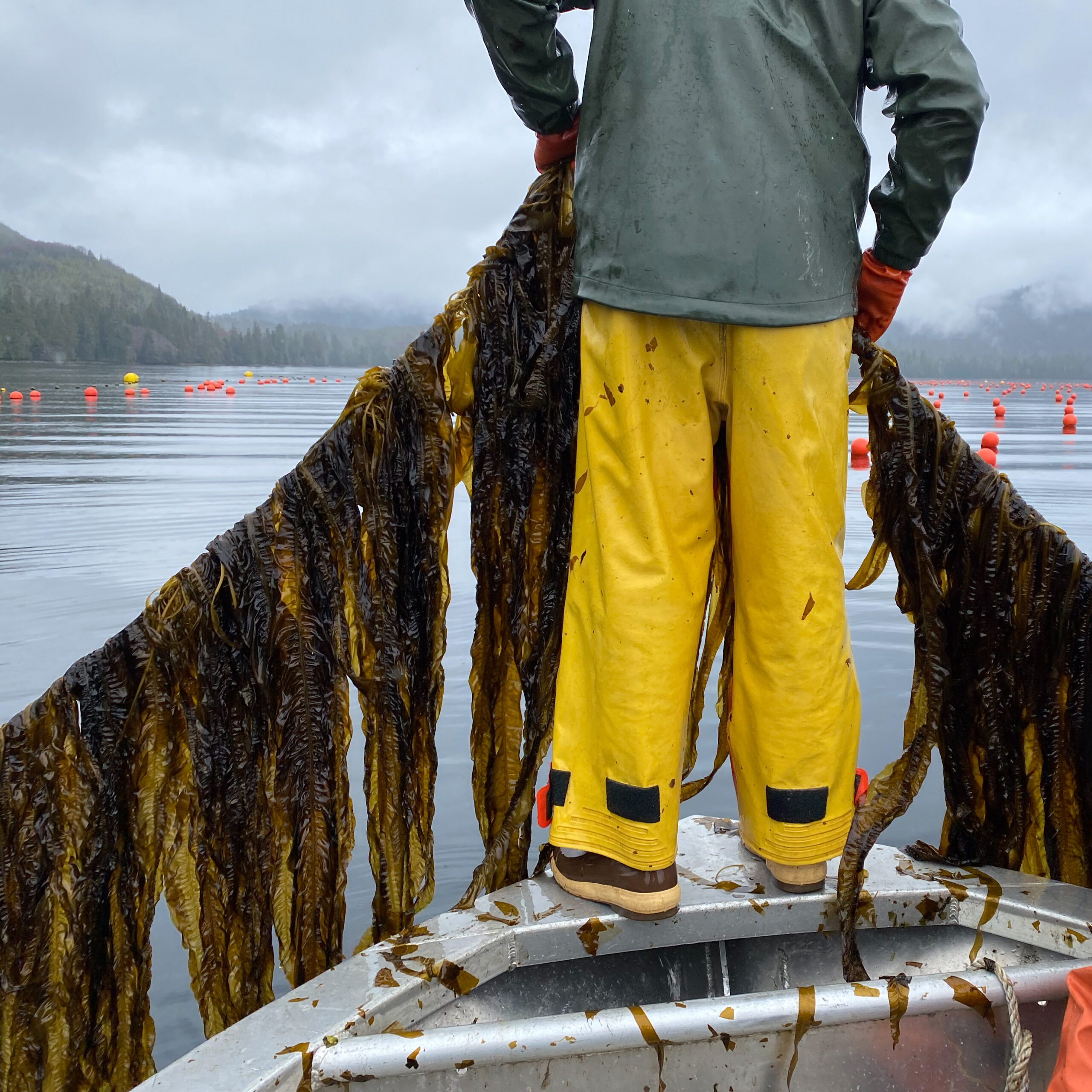
One Response
Hi, what nutrients are used in the inoculation process to grow the kelp spores into baby kelp in the aquaria?
Thanks.